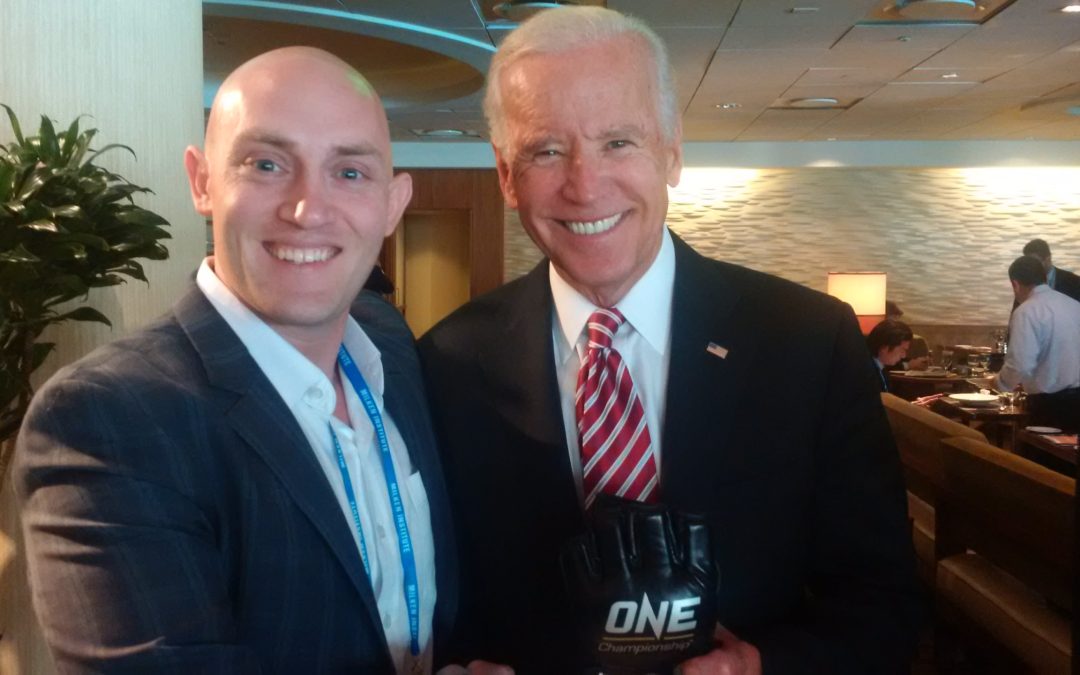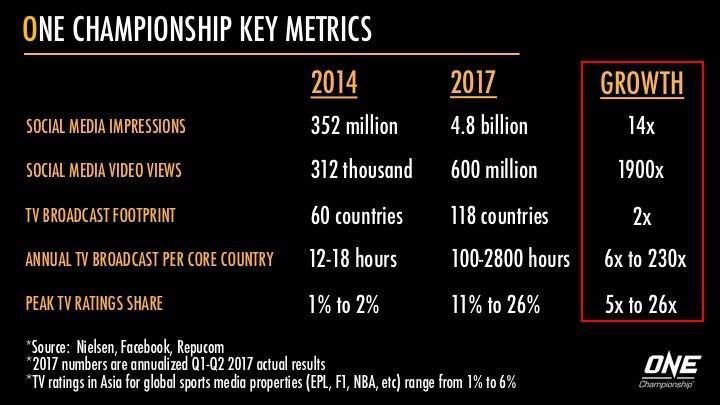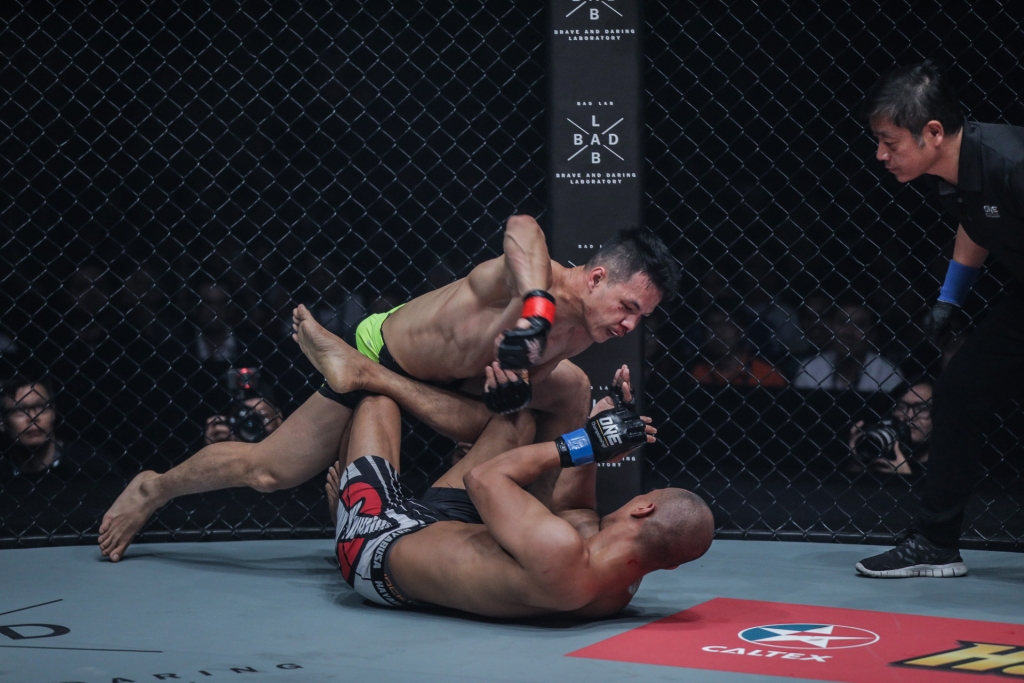Over 5 years ago, Loren Mack joined ONE Championship to take care of the company’s public relations. He had just spent a huge part of his young life at Ultimate Fighting Championship (UFC), launched in 1993. At the time of his joining UFC, the company was deeply in debt to the tune of US$40 million. When he left, it was valued at over US$1 billion and the owners of UFC had just been published on the front cover of Forbes magazine.
ONE Championship was founded by multimillionaire entrepreneur Chatri Sityodtong and former ESPN Star Sports executive Victor Cui in 2011. A few months later, they hired Loren Mack to be the director of public relations. The formative years went from applying what he had learned at UFC to Mack quickly learning that promoting Mixed Martial Arts (MMA) at UFC in the USA was different from promoting the same sport in Asia where ONE Championship was based.
ONE Championship success
As Mack tweaked his strategies in the following years, ONE Championship began to receive a ton of press coverage, the most mainstream coverage ever for an Asian sports media property, in publications like The New York Times, Forbes, BBC, WSJ, Bloomberg, and The Economist, among others. Despite the early success, Mack likes to say that he “is just getting started.”
Media attention only meant one thing – ONE Championship began to soar. With more press coverage, came more credibility and more love from the public and fans of MMA in Asia. In 2012, the company signed a 10-year television deal with FOX and STAR Sports, at the time, the biggest MMA deal ever made in Asia. Six years later, 128 countries are now giving the company viewership from 1 billion homes.
The company frequently plans some of the largest live showcases of mixed martial arts across cities in Asia. They air their shows through free-to-air and pay-TV channels. Additionally, their OTT platform helps the company distribute content to as many people as they can reach.
Asia is now filled with a large population of young people and the company has embraced digital formats of content distribution. Their Facebook page saw more than 312,000 unique views on their videos in 2014 but that has grown more than a thousandfold to reach over 600 million right now, and will probably hit a billion before the end of 2017.
Asia’s biggest MMA
A year after Temasek joined ONE Championship as investors, just last week, the company landed another investment deal. Sequoia Capital joined hands with Mission Holdings to invest US$100 million into the company to grow it into a sports media powerhouse catering to over 4.4 billion people in the continent. In 2018, they will do up-to 30 shows across Asia as they look to expand into Tokyo, Seoul and China.
ONE Championship, now Asia’s biggest MMA and sports media product is a force to reckon with. The secret to that success was the hiring of Mack to take care of the company’s public relations. We had a chance to interview him and in this piece, he shares with us some strategies that helped ONE Championship game the market.
Build and develop local
To Mack, it has been a focus to build and develop local Asian heroes in order to grow quickly in Asia while still retaining the messaging for every country in the region. “In sports, fans love to root for their own,” Mack says. “Our athletes come to represent various Asian nations and the fans just love to get behind that.”
There is the thrill that comes in sports when you are supporting your very own on the big stage. An integral part to the company’s growth has been to bring in local talent from different Asian countries and support them to shine on the continental stage. The aspect of competition in the fan base between the Asian countries is therefore bound to arise.
“Angela Lee, one of the most talented young competitors in MMA today, represents Singapore. Eduard Folayang, a humble former school teacher now lightweight champion, represents the Philippines. Aung La N Sang, returning to his home country of Myanmar after spending years away in the United States, is now middleweight champion,” Mack says. “These are human stories of bravery and excellence, and that is the kind of thing Asian fans really care about.”
Research your market
The most common mistakes that public relations teams make when they enter into this marketplace for the first time is that they don’t do the research in certain markets. Clearly, not doing enough research of a target market is a huge mistake, committed widely by many companies in the same field. It is tantamount to getting into a market blindly with the assumption that you know what you know, and it’s enough, if not you will learn and change quickly – a big fallacy in itself.
Mack says, “A lot of research and planning is done before we jump into any given market. Every country is different, with its own laws and its own culture.” Like any content, Asians are not similar. Differences in perceptions of the game exist. These differences can be very apparent sometimes, but most times it takes research to fish them out. He continues, “We have to pay attention to what resonates with fans not just on a regional level, but right down to local communities. The potential for martial arts is everywhere, but you have to put the work in to realize how to harness its power.”
Focus on the values
ONE Championship’s streak of growth cannot just be justified by research – which was a very good start. Mack admits that most companies in the same space that aren’t as large as ONE Championship focus very much on the fighting aspect of the sport, which is the actual competition. But how then does ONE Championship win to justify the immense growth?
Mack says, “We understand the DNA of martial arts in Asia. Martial arts has been home in Asia for the past 5,000 years. Virtually every nation in Asia is practising a unique martial art that is part of their history.”
Understanding the sport to its most little historical detail opens up so many discoveries. While in other circles the focus is on the fighting, Mack’s strategy is different. “In Asia, we focus on the values of martial arts, values people can relate with. Martial arts represents honour, courage, perseverance, respect, and many others. This is what we care about in Asia, and why we have been able to inspire fans.”
It’s not really about fighting then, there are values that are ingrained in the fabrics of human culture when it comes to the sport. Unlocking these values reaches out to the fans more than saying the word ‘fight’ which doesn’t inspire any kind of innate culture in the sport.
What the fans care about
Having managed public relations in the USA with the UFC, Mack tried to use the same experience to implement public relations efforts in Asia for ONE Championship; but he quickly learned that it was a different ball game when you come to Asia. The strategies in the USA couldn’t work anymore. He says, “It’s just a whole different game in Asia. The Asian people not only value excellence and quality, but also principles like honour and respect. As an organization, you have to recognize that and tailor your approach to making sure those values are taken into consideration.”
It absolutely feels like when you have the perfect product, built to the core in quality but the customers just won’t come. Or more like the ghost towns that sprawl various cities in the world today. These cities have perfectly built houses, and some have huge airports like the ones in Spain and China. However, people just won’t live there. It definitely boils down to not having considered the values of the market, and what they really care about.
He says, “In Asia, we have to dig a little deeper to find what it is the people really care about. We strive to incorporate martial arts into the daily fabric of society in a subtle and gentle way.”
Educate the people
For a company the size of ONE Championship, misconceptions exist when entering a new market. There is usually some information about the company that the locals know. Some of that information might not be accurate, or might just be outright rumours. If not handled properly, whatever information existing in that market might spell doom to the company’s chances of settling in that new place.
Mark says, “One of our biggest tasks is to educate the people about the sport of mixed martial arts and help them realize the sport as a viable option for professional martial artists. We make tremendous efforts to connect with the grassroots communities, the local gyms and other martial arts organizations.”
Educating people clears any misunderstandings once and for all. It also shows a lot more credibility if you take this information to them rather than wait for a statement to be made then react to it. To curb such kinds of things, educate the people you are taking the product to and show them how they benefit. He says, “A lot of hard work put into entering a new market, and the entire team works tirelessly together to create something special. Whenever we enter new markets, we make sure it will have a lasting impact on local society.”
Dedication and hard work
Public relations is not a very easy thing. For new companies, it is especially a very hard thing to come by. Mack advises startups from all fields, “There is absolutely no replacement for the dedication and hard work. The path to success is laden with challenges and obstacles and the only way to overcome these is by putting in the hours and doing what you need to do. There are no shortcuts.”

ONEFC Stadium
There are so many clever ways to achieve press coverage for your startup, but an integral part is working smart too as Mack says, “You have to work intelligently as well, so it’s not just working extremely hard, which is a must, but also being smart with how you work and knowing how to manage time as well as prioritize.”
As you work smart and hard towards creating publicity for your startup, learn from the mistakes that you make on your way. Learn from the positives too. To reduce the chances of making mistakes. Find out about growth hacking public relations and grab as much knowledge as possible before setting out your PR strategy.
“There is so much that we can do, and so much that we can learn with experience. Working hard is the first step towards achieving our goals,” he emphasizes.
Offer an inside look
ONE Championship does not currently struggle with public relations. However, like any young company when Mack first started reaching out to the media, it was extremely hard. He says of the experience, “In the beginning, nobody even knew what mixed martial arts was. We were always making quick phone calls because people were hanging upon us before we even had the chance to speak. It was definitely hard when we first started out.”
In a somewhat encouraging statement, he continues, “It was definitely very difficult in the beginning. Virtually no one took my calls. I woke up every morning at 4:30 because I had to cater to different time zones and spent the first few years getting rejected at least 25 times before at least one media gave me an opportunity. It was hard, but once the opportunities started to roll in, it worked out very well.”
They decide to hire large public relations firms and end up paying lots of money for media coverage that isn’t guaranteed. Mack didn’t need to hire large public relations agencies to scale ONE Championship. He runs a team of public relations people at the company just like the beginning, without any PR agency. However, the secret to getting media coverage at the very beginning was in something bigger.
“As mentioned before, in Asia, fans care more than just the fighting and the competition. They want to hear human stories. They want to be inspired by stories of bravery and courage. We gave fans a peek into the lives of our athletes and what makes them who they are as warriors, as citizens of the world. By allowing an inside look, building our local Asian martial arts heroes, we inspired fans all across the region.”
The Power of Public Relations
The power of the media is evident in the growth of many companies around the world if not all. The aspects of growth for companies expanding into new markets or needing a little publicity can all benefit from Mack’s strategies. For companies going into very cultural markets, these public relations strategies can also boost immense growth. From building and developing local to giving your market an inside look into your company. The truth remains that public relations is harder when you start. It can be hard to crack unless you put your heart into it, working intelligently towards set goals.



